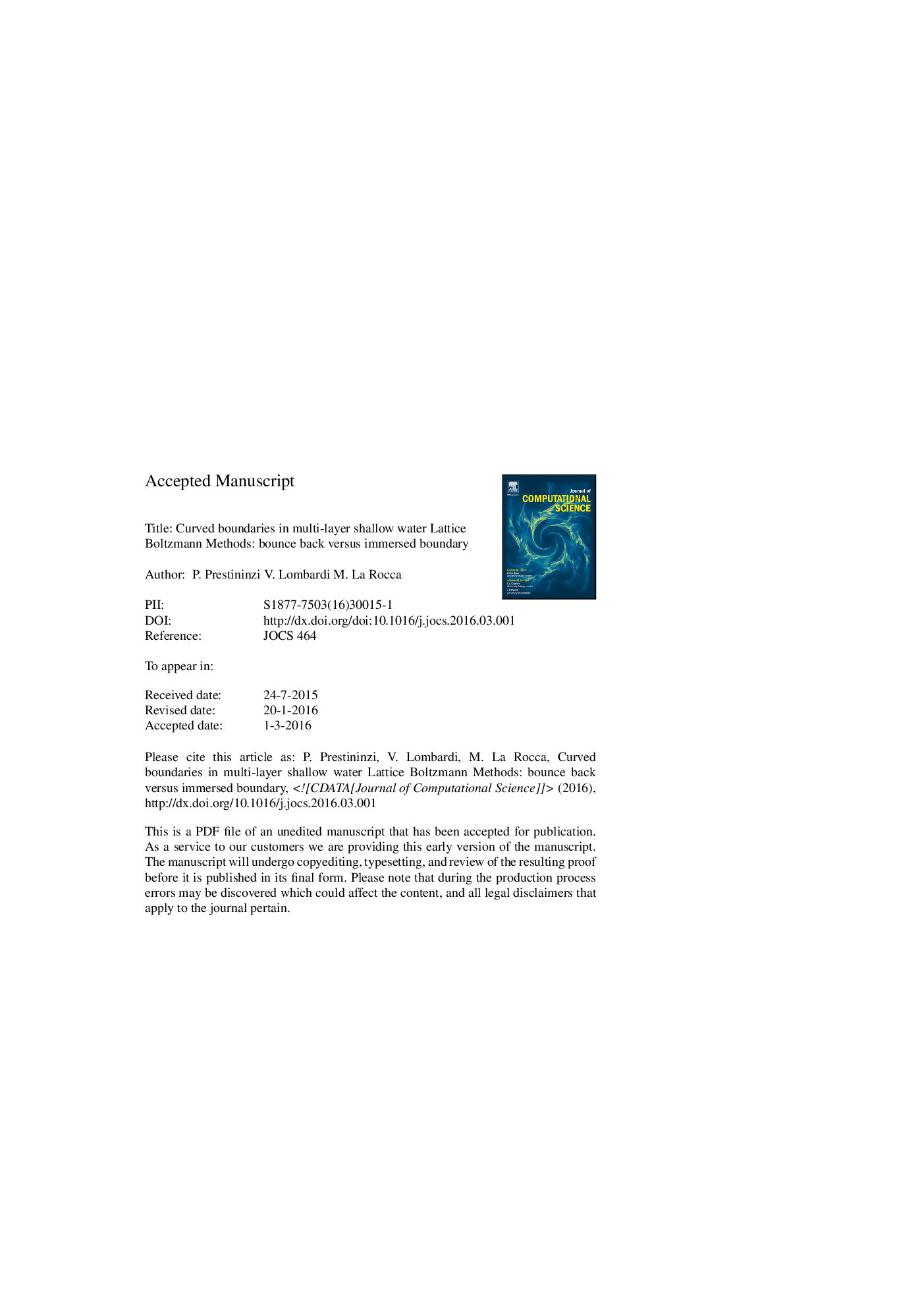| Article ID | Journal | Published Year | Pages | File Type |
|---|---|---|---|---|
| 6874515 | Journal of Computational Science | 2016 | 45 Pages |
Abstract
The Lattice Boltzmann Method has been successfully applied to solve Multilayer Shallow Water models for the simulation of gravity currents generated by laboratory lock exchange experiments in regular geometries. When complex boundaries are to be modelled, several approaches are feasible. In this work two types of boundary conditions are analyzed and compared in the simulation of lock exchange gravity currents impacting on vertical obstacles. The first one belongs to the common group of bounce back approaches; the second one is an adaptation of the immersed boundary technique to the Shallow Water dynamics. The analysis is carried out comparing accuracy against experimental data. Efficiency is also taken into account. Results show that the computational overhead introduced by the Immersed Boundary technique is not counterbalanced by a gain in accuracy for the considered kind of obstacles.
Keywords
Related Topics
Physical Sciences and Engineering
Computer Science
Computational Theory and Mathematics
Authors
P. Prestininzi, V. Lombardi, M. La Rocca,
